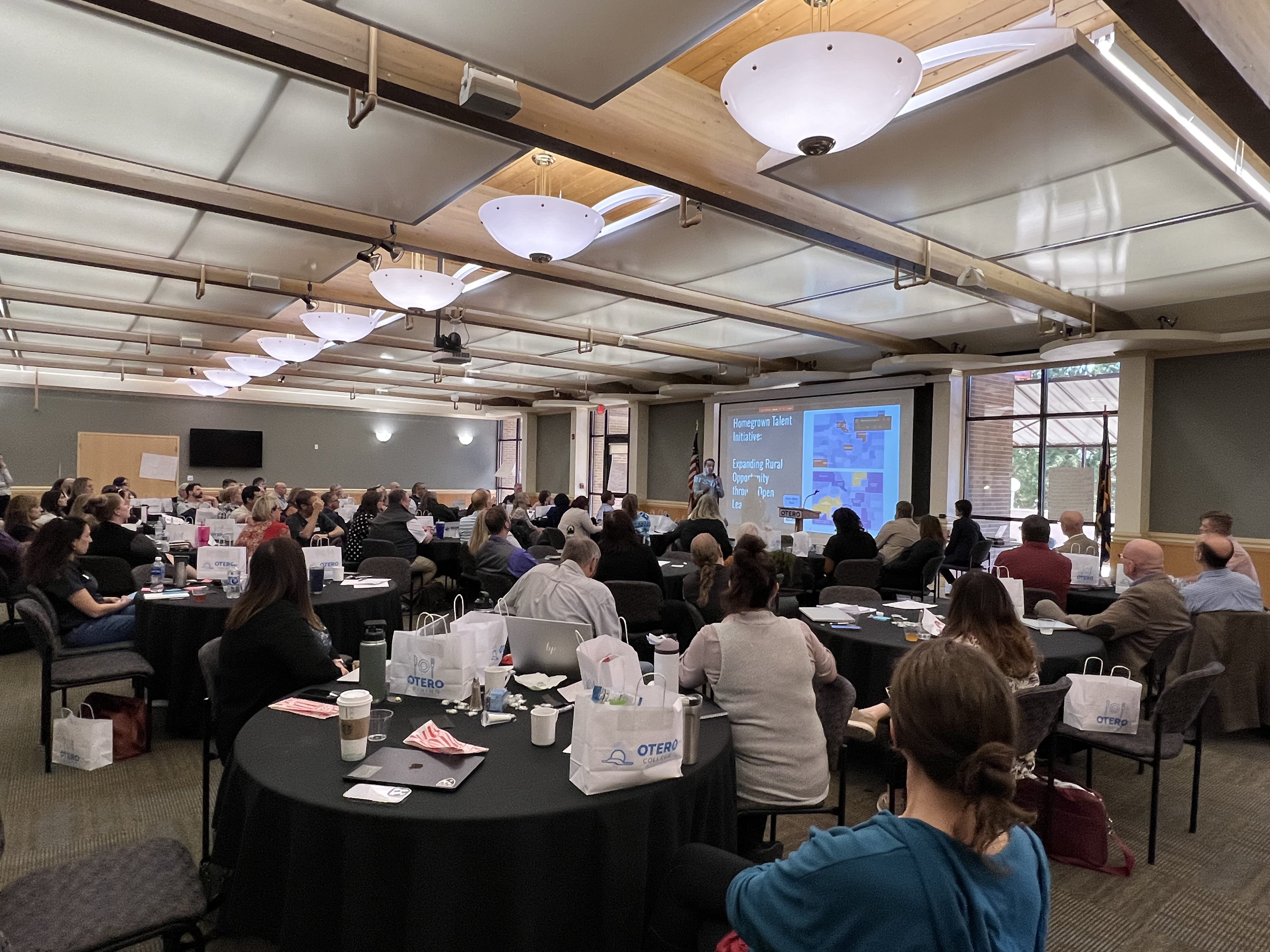Testimony to the U.S. House Small Business Subcommittee on
Innovation, Entrepreneurship, and Workforce Development
Joe Garcia, Colorado Community College System Chancellor
November 04, 2021
Introduction
Chairman Crow, members of the subcommittee, my name is Joe Garcia and I am the Chancellor of Colorado’s Community College System.
Collectively, our thirteen community colleges are the state’s largest provider of higher education and career training, serving approximately 125,000 students annually at over 35 locations around the state. We provide accessible, affordable, supportive, and transformative post-secondary education and workforce training to help our students build better lives and stronger communities.
Importance of community colleges to businesses and the economic recovery
Post-secondary educational institutions will be key to our recovery from the pandemic by developing a competitive workforce, and it is Community Colleges in particular that are most accessible to workers and responsive to business and industry needs.
This past year, we targeted, enrolled, trained, and supported displaced workers and non-traditional adult students, helping them to reskill or upskill and obtain industry-recognized credentials that align to in-demand, high-wage occupations, and, in the end, lead to meaningful employment.
Our colleges have committed to reimagining how best to serve today’s adult learner, redefining what success means for this particular sub-set of students, putting less emphasis on traditional degree completion and more emphasis on the development of entrepreneurial skills tied to career-aligned programs that provide family-sustaining wages.
As industries automate and evolve, we know individuals will pursue opportunities in new sectors and occupations, so our colleges work in partnership with industry to develop curriculum and short-term programs that allow individuals, with varying levels of academic readiness, an opportunity to quickly shift into new roles based on their actual skills and experiences.
We also deploy customized corporate training and non-credit offerings that allow for lower cost, shorter programs aligned with industry standards. Apprenticeship programs and other work-based learning gives students the opportunity to “earn-while-you learn” and minimize or eliminate student debt and accelerate career advancement. Apprenticeships have proven successful for decades in the skilled trades sector, and we now support opportunities in non-traditional sectors like information technology, financial services, and healthcare.
To help students further reduce the cost of their education and decrease time to credential attainment, we have also been at the forefront of providing opportunities to earn post-secondary credit from past work experience, and demonstrated knowledge, skills, and abilities through what we call prior-learning assessment.
These are just a few examples of the ways our colleges provide relevant, cost effective workforce education and training. Employers know the value of a well-educated employee, and they know our programs produce more productive and valuable employees, in part because employers help us to design and offer the training.
Supporting community colleges through funding mechanisms
Though our colleges continue to stand at the ready to support the workforce of the future, it is critical that we ensure equitable access for all students. Non-credit and short-term programs are oftentimes not financial aid eligible, resulting in a debt load to the student and narrowing enrollment to those who can afford to pay. Financial aid adaptations, like short-term Pell, could dramatically increase enrollment specifically for low-income, marginalized, adult students who are most in need of training.
Additionally, our workforce programs, while innovative and responsive, are expensive to develop, involve more expensive equipment, and require more highly paid instructors than traditional academic programs. For example, programs in information technology, healthcare, and advanced manufacturing are in great demand, but are also among the most expensive programs to offer. In order to maintain our roles as leading providers of workforce training and maintain affordability for students, it is critical that we make meaningful investments in career and technical education infrastructure at our colleges.
Conclusion
In conclusion, community colleges are the key to our nation’s economic future, and its civic and cultural vitality. We serve the fastest growing student populations—those with limited economic resources, those who are ethnic and racial minorities, refugees, veterans, working parents, and many others who have not been well served in more traditional and more expensive four-year institutions. As our economy relies more and more on those with higher education and skills training, we are the colleges that will equip students for success in the future.


